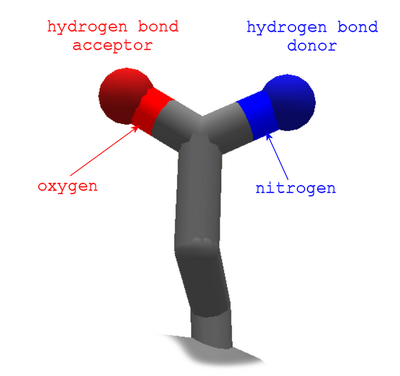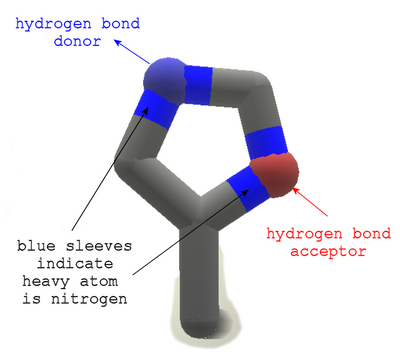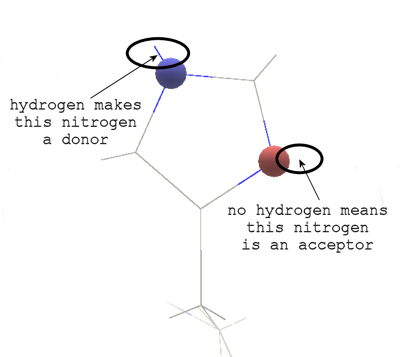In Foldit, CPK is a coloring option, found on the View menu. It's similar to the EnzDes coloring option. See the amino acid gallery for the appearance of each amino acid with EnzDes coloring.
The name CPK is taken from the CPK coloring convention used for ball-and-stick molecular models. "CPK", refers to Robert Corey, Linus Pauling, and Walter Koltun, who developed the system.

Glutamine in CPK coloring with bondable atoms shown. The red and blue sleeves identify oxygen and nitrogen.
CPK coloring in Foldit differs from plastic models in several ways. CPK only colors nitrogen (blue), oxygen (red), and sulfur (yellow). (The last nitrogen in the proline sidechain is a special case, colored black.) CPK makes it easier to distinguish amino acids which otherwise look alike -- for sample, in CPK, serine has a red tip, and cysteine has a yellow tip.
CPK coloring only affects the sidechain. The backbone and the carbon atoms in the sidechain are grey. (EnzDes uses green instead of grey.)
The CPK colors appears as "sleeves" on the sidechain, versus spheres. Spheres are used for a different purpose.
The Foldit view option "Show bondable atoms", along with the various "Show bonds" options, can also be used to help distinguish amino acids. When "Show bonds (sidechain)" is selected, sidechain atoms which can act as hydrogen bond donors are shown as blue spheres. Hydrogen bond acceptors are represented by red spheres. The spheres appear over the CPK color "sleeve".
CPK colors sidechain nitrogen atoms with a blue sleeve. A nitrogen atom can act as either a hydrogen bond donor or and acceptor. So the blue sleeve can have either a red or a blue sphere if "Show bondable atoms" is selected. This is because of normally invisible hydrogen atoms.

Histidine in CPK coloring. Both acceptor and donor are nitrogen.
Hydrogen atoms aren't shown in most Foldit view options, which include only "heavy" atoms. Some view options, such as "Line+H" can reveal the hydrogens. Showing the hydrogens can help clarify why one atom is an acceptor, while another is a donor. For example, in histidine sidechains, one atom is an acceptor, one is a donor. Their blue sleeves with CPK coloring show both are nitrogens. The Line+H view shows that one nitrogen has an attached hydrogen, making it a hydrogen bond donor.

Histidine in Line+H view with CPK color. An added hydrogen turns one nitrogen atom into a hydrogen bond donor.